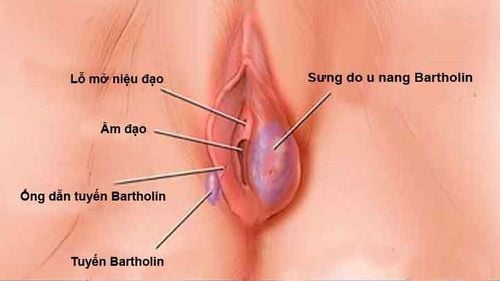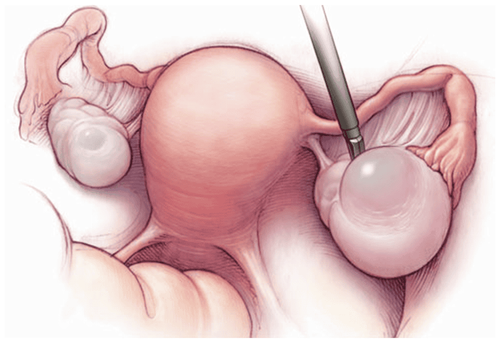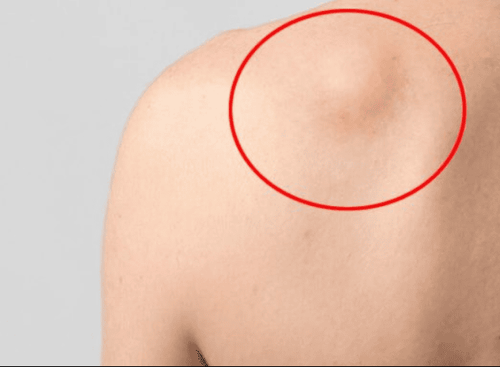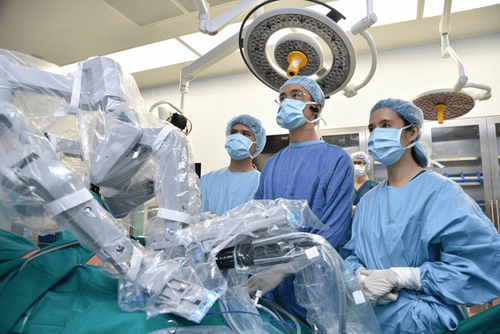This is an automatically translated article.
Ovarian cyst torsion is an acute complication of ovarian cyst. In case of a lot of torsion, it is impossible to return to the original position and if not operated in time, the tumor can necrosis and rupture, causing massive bleeding, endangering the patient's life. Ovarian torsion often occurs with large tumors.
1. Learn about torsion ovarian cysts
Ovarian cysts are benign tumors including functional and organic tumors caused by hormonal disorders or diseases. If it is a functional cyst, it can disappear after a few menstrual cycles, while for a cystic entity, it does not disappear over time, but tends to grow larger and cause many dangerous complications.
Any cyst, whether functional or physical, is at risk of twisting. However, ovarian torsion often occurs with tumors with a diameter of 5-10cm, especially with ovarian dermoid tumors, tumors with long stalks. Besides, ovarian tumors and adenomas after abortion of the eggs can also be twisted.
Twisted ovarian cyst can be untwisted and return to its original position. However, in the case of torsion of many cysts, the cyst cannot return to its original position. The blood vessels on the cyst become blocked causing blood stasis and necrosis. Ovarian cysts twisted into many rings can burst the cyst and bleed at any time, causing blood to flow in the abdominal cavity causing infection, peritonitis, and a lot of blood loss. This is a serious acute complication, if not treated promptly, the patient will be life-threatening.
The causes of ovarian cyst torsion have not been clearly determined, but there are many opinions that, because the cyst does not adhere to the surrounding organs, has high mobility, so it is easy to rotate and twist when walking. driving, running, jumping or exercising vigorously, twisted cysts in women in the first 3 months of pregnancy or postpartum when the uterus shrinks, making the abdomen empty, making it easier for the tumor to move and cause torsion.
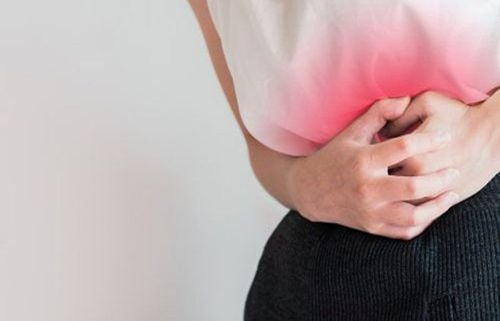
U nang buồng trứng xoắn khi vỡ có thể gây viêm phúc mạc
2. Signs of torsion ovarian cyst
Common signs in torsion ovarian cysts include
Patient discovered ovarian cyst incidentally through previous ultrasound. Severe intermittent abdominal pain in the abdomen below the navel. The time between the pain later becomes shorter and shorter like at first 10 minutes, then shortened to 5 minutes... Then there may be continuous pain, accompanied by abdominal distension. When suffering from acute pain, taking painkillers will not go away, the patient's condition will tend to deteriorate quite quickly within a few hours. May cause nausea and vomiting. In a critical situation, when the twisted ovary is necrotic or ruptured, the patient may go into severe shock, causing the body to be dizzy, panicking, sweating, fainting or having a high fever. In case the cyst is large, it will press on the urinary tract causing frequent urination, urinary frequency, difficulty urinating, constipation (compressing the rectum), compressing the inferior vena cava causing edema of the lower extremities...

Buồn nôn là một triệu chứng của u nang buồng trứng xoắn
3. How to treat twisted ovarian cyst?
When it is discovered that the cyst is twisted, whether it is more or less twisted, the patient should still have surgery soon. Especially the case of acute torsion cyst requires immediate intervention. Depending on the condition of the cyst and the need for fertility, the doctor will remove part or all of the ovaries.
Currently, there are 2 main surgical methods to remove ovarian cysts that are:
Laparoscopic surgery: Modern surgical method, less invasive, less painful, high aesthetics because it does not leave large scars. , less complications, fast recovery time. However, this method only applies to small tumors, easy to perform, requires facilities and experienced surgeons. Open surgery: Open surgery is very effective for patients with large cysts, cysts located in difficult to remove positions or complex cysts such as cancerous tumors, cysts located on loose tissue. Disadvantages are less aesthetic, longer recovery time than laparoscopic surgery.
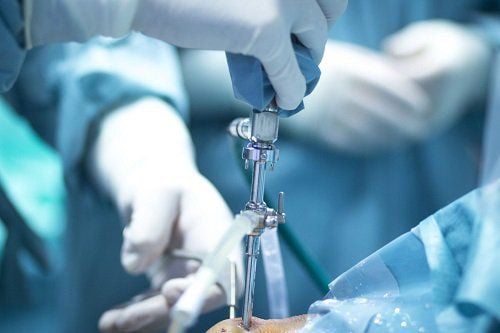
Mổ noi soi được áp dụng phổ biến hơn trong điều trị u nang buồng trứng xoắn
4. Prevention of twisted ovarian cysts
Is a dangerous disease, but you can completely prevent it by the following:
The most important prevention to prevent the risk of ovarian cyst torsion is that the patient needs to pay attention to periodic reproductive health monitoring 3-6 months/time. In case ovarian cyst is detected, if there is no indication for intervention, it is necessary to monitor the progression of the tumor closely as directed by the doctor. Cysts can be twisted at any time, so those who have discovered ovarian cysts need to pay attention in daily activities, should walk gently, have gentle sex, and avoid rough intercourse. violence, work too hard... Cysts after surgery ovarian cysts can still recur and twist again. Therefore, after treatment, patients need to be monitored periodically for early detection. Ovarian torsion is a disease that can occur at any age, of which the most common are women of reproductive age. This is an ovarian cyst complication that cannot be ignored because it affects a woman's health, quality of life as well as fertility.
In order to help customers detect and treat other gynecological diseases early, Vinmec International Hospital has a basic gynecological examination and screening package, helping customers detect early inflammatory diseases Easy, inexpensive treatment. Screening detects gynecological cancer (cervical cancer) early even when there are no symptoms.
Please dial HOTLINE for more information or register for an appointment HERE. Download MyVinmec app to make appointments faster and to manage your bookings easily.




